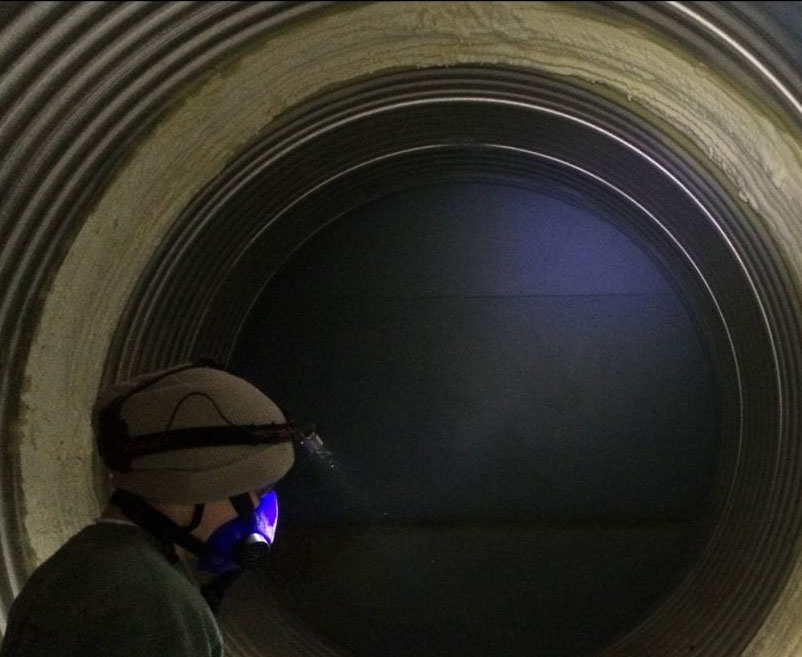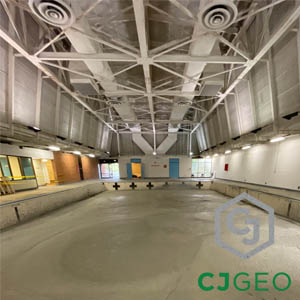Pipe & Culvert Repair Projects
-

North Jersey Annular Space Grouting
THE JOB This North Jersey annular space grouting project is located in Paterson, New Jersey. A 30...
-

HDPE reline annular space grouting
THE JOB A utility contractor installing 500LF of 48″ HDPE reline pipe through a 63″ CMP culvert r...
-

25VF stormwater manhole sealing
THE JOB Leaks throughout the joints on a 25VF, 48″ precast stormwater manhole were leaking....
-

Box Culvert Leak Sealing
THE JOB A new double box culvert was constructed. The original single box culvert needed to be ab...
-

Box Culvert Abandonment
THE JOB This box culvert abandonment project is located in Alexandria, Virginia. The existing sin...
-

8 foot diameter CMP joint sealing
THE JOB This CMP joint sealing project is located near Fredericksburg, Virginia. An 8′ diameter s...
-

SSP Tunnel Reline Back Grouting
THE JOB This tunnel reline back grouting project is located in Somerset, Pennsylvania. The roof o...
-

Stormwater Pipe Repair
The Job This stormwater pipe repair project is located at a chemical manufacturing plant in Peter...
-

Dam Outfall Pipe Seep Grouting
THE JOB This dam outfall pipe seep grouting is located in Fairfax, Virginia at Northern Virginia ...
-

HDPE Pipe Joint Sealing
THE JOB A large sinkhole opened up in the parking lot of a manufacturing facility. The sinkhole w...
-

Stormwater Pond Outlet Structure Grouting
THE JOB This stormwater pond outlet structure grouting project is located in Washington Township,...
-

Sinkhole Repair
The Job A sinkhole opened up in a drainage easement maintained by an HOA. The cause of the sinkho...
-

HDPE Joint Repair
The Job This HDPE joint repair project is located in Virginia. A sinkhole opened up in a drainage...
-

Sand Filter Joint Sealing
The Job This sand filter joint sealing project is located in Richmond, Virginia. Two underground ...
-

15 inch RCP point repair
The Job This 15 inch RCP point repair project is located near Richmond, Virginia. A 6′ deep sinkh...
-

RCP Pipe Sealing
THE JOB This RCP pipe sealing project is located in Wake Forest, North Carolina. The asphalt park...
-

Acid Drainage Grouting
The Job This acid drainage grouting project is located in West Virginia. A 72″ CMP stream d...
-

Multiplate Tunnel Grouting
The Job This multiplate tunnel grouting project is located in Asheville, North Carolina. During a...
-

8′ CMP Joint Grouting
The Job A spec warehouse was planned for a vacant piece of land which had 1700LF of 8′ CMP ...
-

Box Culvert Void Filling
The Job This box culvert void filling project is located near Fredericksburg, Virginia. The Virgi...
-

48 Inch RCP Joint Repair
The Job This 48 inch RCP joint repair project is located in Raleigh, North Carolina. The pipe is ...
-

Outfall Leak Grouting
The Job This outfall leak grouting project is located near Emporia, Virginia. The work is located...
-

New Jersey permeation grouting
The Job This New Jersey permeation grouting project is located in Elizabeth, New Jersey. It is at...
-

RCP Joint Sealing
The Job This RCP joint sealing project is located near Charlottesville, Virginia. The polyurethan...
-

Penstock Void Grouting
The Job This penstock void grouting project is located near Hopkinton, New Hampshire. It is locat...
-

WWTP Tunnel Curtain Grouting
The Job This WWTP tunnel curtain grouting project is located in Syracuse, New York. It is located...
-

Indoor Pool Abandonment
The Job This indoor pool abandonment project is located in West Virginia, at Concord University. ...
-

Spillway Undersealing
The Job This spillway undersealing project is located at a dam in Tuckahoe, Virginia. The dam is ...